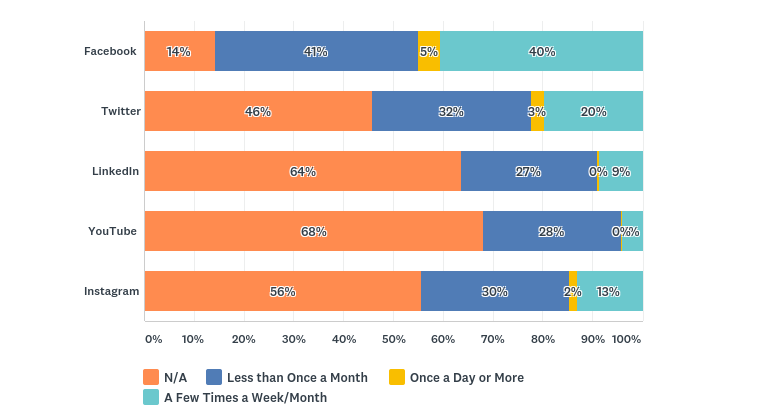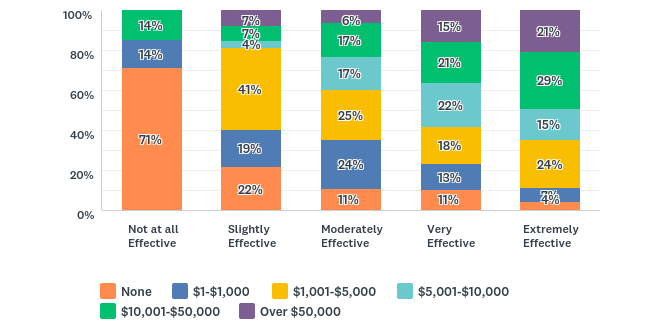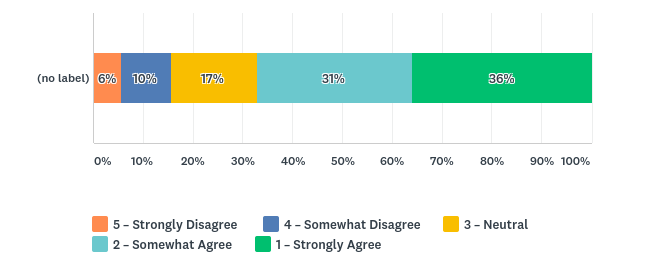
What Over 1500 Volunteer Managers are Saying About Our Field
For the last four years, VolunteerPro has conducted an extensive survey of volunteer managers, coordinators, directors, and administrators from all over the world. In this year’s state-of-the-industry volunteer management survey, we set out to learn top challenges, job salaries and number of volunteers engaged compared across organizations, and the Net Promoter Scores (NPS) for the most widely used volunteer management software platforms.
This year, in what we dubbed our “Tech Edition,” we are also exploring the current digital maturity of volunteer administration and our use of technology to engage and foster relationships with volunteers.
Let’s dive in!
3 Key Takeaways from Our Yearly Volunteer Management Survey
What Technology are You Using?
Communicating with today’s digitally connected volunteers is a complex task, and volunteer managers are struggling to speak the language. Our survey revealed an extensive underutilization of web and mobile tools like social media, email automation, and online training.

How Often Social Media Platforms are Used
As you can see, Facebook is the most widely used tool over Twitter, LinkedIn, YouTube, and Instagram. A whopping 86% of those surveyed use it, but the majority of users post less than once a month! Not the best way to encourage engagement with your organization.
And, while YouTube appears to be the least used platform by leaders of volunteers, it might be the second most important behind Facebook. According to Statista.com YouTube had 1.9 billion active users as of October 2018. Facebook had 2.23 billion.
Key Takeaway: If you’re not using Facebook and/or YouTube, start using them, today!
For other insights on volunteer management and technology (like which Volunteer Management Software is voted the highest), check out details in the full 43-page Volunteer Management Progress Report.
What Makes You Feel Confident?
Volunteer managers wear many hats. During your tenure, have you ever had to develop policies and procedures, define volunteer roles, match volunteers, manage conflict, train volunteer leaders, coach your co-workers, or create volunteer recognition practices? Of course you have, you rock star.
Once stated it seems obvious, but our volunteer management survey found that when you’re given better resources to do your job, you feel more confident and competent in wearing all those colorful hats of yours.

Perceived Effectiveness in Correlation to Program Budget
There is a strong correlation between how effective volunteer managers feel and whether they fill more open volunteer opportunities. In addition, correlations appeared between those who feel highly effective and and those who use social media at least once a month and have a designated program budget. Specifically, the higher the budget, the more confident and competent our respondents felt. Of the 20% of respondents who had less than $1000 budget dollars to work with, 85% do not feel effective at all in their work. However, 50% of those who have a budget higher than $10,000, feel extremely effective.
Key Takeaway: When you have the right resources, you feel better about your overall performance!
For more money talk (like salary variables by certification, title, and organization type, check out the Volunteer Manager Progress Report.
Who are You? Consistent Trends Over Four Years
Consistent trends in responses and demographics have persisted across four consecutive years of surveys. Year after year, the average volunteer managers are white women from every age group.
As for biggest obstacles? They remain consistent as well. Year after year, recruitment is the number-one, biggest challenge you face. Year after year, issues like respect, buy-in, and reliability from executive leadership and co-workers continue to be your greatest obstacles to success. Yet, year after year, with burnout increasing and these challenges persisting, leaders of volunteers intend to stay in the volunteer management field.

Intent to be Working in the Field Three Years from Now
Even in surveying international cohorts, these trends and challenges haven’t changed, demonstrating how much the US has in common with fellow countries and cultures. Leaders of volunteers, while scattered across the globe living within differing societal norms and standards, are all the same, really. We all want the same thing – communities that come together in pursuit of the common good.
Key Takeaway: Recruitment and staff buy-in are your biggest challenges, but no matter where you are in the world, you’re dedicated to volunteerism.
More Questions than Answers
Every year, this volunteer management survey opens up as many questions as it answers:
Does the average volunteer manager demographic suggest volunteerism has a diversity problem? Does this lack of diversity affect who becomes a volunteer? And, does it affect
which volunteers discover opportunities, thus reinforcing a cycle of sameness?
Are the top challenges related? How does the lack of respect and resources impact the ability of volunteer services to fill needed roles? Is retention also affected, creating a vicious cycle? How can we ensure talented professionals don’t leave the field due to lack of resources, support, or respect?
Is the lack of digital maturity impacting our ability to connect with, recruit, and engage volunteers? How can technology help us work smarter, not harder?
All in all, though, these are good questions to be asking. We can’t solve issues we aren’t aware of. In the continual cycle of asking and answering and asking, we become better advocates for our field, better engagers in our communities, better leaders of volunteers.
__
Where do you fit in the scope of this volunteer management survey? Do you have an answer to any of these questions? Drop your thoughts in the comments!






